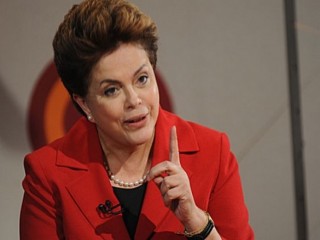
Dilma Rousseff biography
Date of birth : 1947-12-14
Date of death : -
Birthplace : Belo Horizonte, Brazil
Nationality : Brazilian
Category : Politics
Last modified : 2023-12-14
Credited as : economist and politician, former President of Brazil, Worker's Party
8 votes so far
President Rousseff received her primary education at the traditional Nossa Senhora de Sion School and her secondary education at the State Central High School in Belo Horizonte, then a hub of student activism. At the age of 16, President Rousseff began her political career, taking part in movements against the military regime that ruled Brazil from 1964 to 1985.
In 1969, President Rousseff met Carlos Franklin Paixão de Araújo, a lawyer from Rio Grande do Sul, Brazil’s southernmost state. Together, they suffered persecution under the military regime. In 1970, President Rousseff was arrested and spent almost three years in a penitentiary in the city of São Paulo.
After being freed from prison in 1973, President Rousseff moved to Porto Alegre, the state capital of Rio Grande do Sul. She resumed her studies at the Federal University of Rio Grande do Sul, where she earned a degree in Economics. In 1975, President Rousseff started an internship at the Foundation of Economics and Statistics (FEE), a think-tank of the Rio Grande do Sul state government. In 1976, her first and only child, Paula Rousseff de Araújo, was born.
In the late 1970s, President Rousseff participated in an amnesty movement that supported citizens who had been deprived of their political rights or expelled from the country. Together with her then husband Carlos Araújo, President Rousseff became one of the founders of the Democratic Labor Party (PDT) in Rio Grande do Sul. In 1986, she was appointed Municipal Secretary of Treasury of Porto Alegre by Mayor Alceu.
Following the return to democracy, President Rousseff took active part in the 1989 presidential campaign, supporting PDT candidate Leonel Brizola in the first round and Luiz Inácio Lula da Silva, from the Workers’ Party (PT), in the runoff. In the early 1990s, President Rousseff served as president of the Foundation of Economics and Statistics. In 1993, Alceu Collares, then Governor of Rio Grande do Sul, appointed her State Secretary of Mines, Energy and Communications, a position she held again under Governor Olívio Dutra, who was elected in 1998. In 2001, President Rousseff joined the Workers´ Party and one year later, Luiz Inácio Lula da Silva was elected President. Impressed with President Rousseff´s knowledge and experience in the energy sector, President Lula appointed her Minister of Mines and Energy.
Between 2003 and 2005, President Rousseff led an in-depth redesign of Brazil’s electricity sector and created the “Light for All” program, which made electricity available to more than 11 million Brazilians living in rural areas and in the outskirts of large cities. As chair of the board of directors of Petrobras, she encouraged biodiesel research and production.
In 2005, President Lula chose President Rousseff to serve as his Chief of Staff and to oversee the work of all of the ministries. In her new capacity, President Rousseff played a decisive role in coordinating the Growth Acceleration Program (PAC), a set of policies and measures to promote investments in infrastructure; and “My House, My Life”, the biggest housing program in the nation’s history. She also coordinated the new regulatory framework for the exploration of Brazil’s pre-salt oil reserves.
President Rousseff left the government of President Lula on April 3, 2010 to become the presidential candidate for the Worker’s Party. In the runoff election on October 31, 2010, she was elected President of Brazil with almost 56 million votes.
In March and April 2015 millions of protesters took to the streets during the 2015 protests in Brazil against Rousseff's alleged involvement in the Petrobras scandal which involved kickbacks and corruption. When allegations surfaced that graft occurred while President Rousseff was part of the board of directors of Petrobras, between 2003 and 2010, Brazilians became upset with the government and called for Rousseff's impeachment. No direct evidence implicating Rousseff in the scheme has been made public, and she denies having any prior knowledge of it.
















